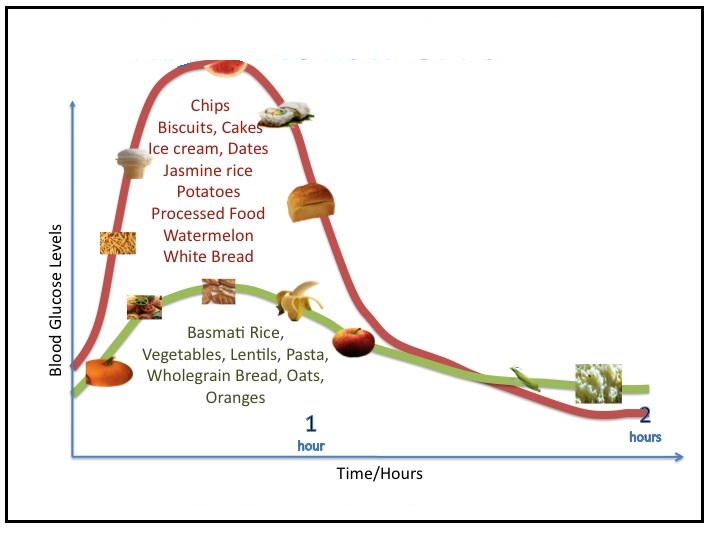
Glycemic index is an important concept in nutrition. It provides a method for comparing and “normalizing” sugar moieties in food items, akin to an exchange rate for currency comparison or a 1-10 scale for attractiveness. The number that you hear is a ratio of the sugar spike at T2hrs when normalized to that of pure glucose. If you imagine the sugar spike when eating 50g of a strawberry pop tart and subtract out the sugar spike when consuming 50g of pure glucose you’ll still notice a high rise up the Y-axis; this is a high glycemic index food item. Now let’s imagine 50g of Fiji apples (note the standard quantity); if we see a sugar spike that barely rises above that of glucose we note a very low glycemic index food item. That’s it.

So why should we care about it?
1. It drives decisions! Or it should. High glycemic index food items cause insulin release from the pancreas and a multitude of physiologic side effects ranging from fatigue (“sugar high”) to obesity and type 2 diabetes when the pancreas calls it quits. Preliminary epidemiological studies even suggest higher rates of heart disease, colorectal cancer, infertility, and macular degeneration. More will come from this in the near future.
2. It’s modifiable. Increasing fiber content with higher glycemic index foods helps delay absorption spikes which overload the liver. Similarly, refinement of grain removes the bran and germ layers which are important to slow absorption. Simple dietary choices can make a big difference.
3. You’ll lose weight. And get more hits on Instagram. High fiber low glycemic foods are the cornerstone of weight loss because they dampen insulin, stretch the stomach, and feed into the hormonal regulation pathways of the brain to dictate satiety.

